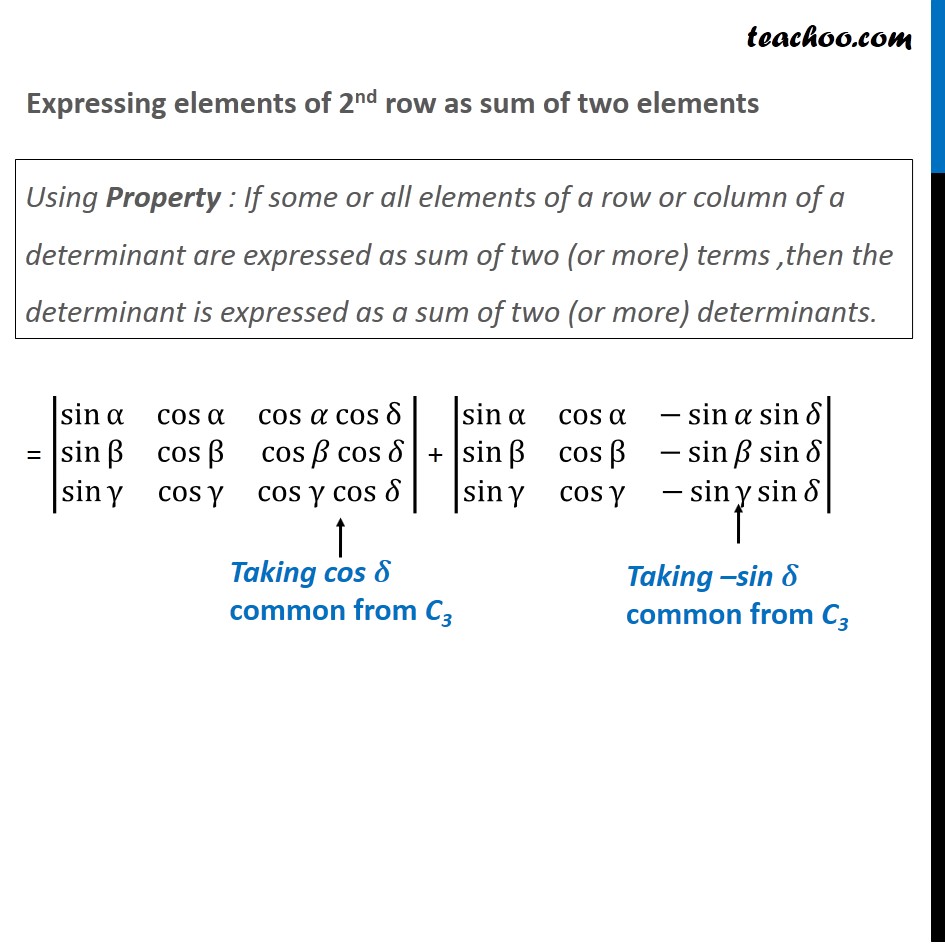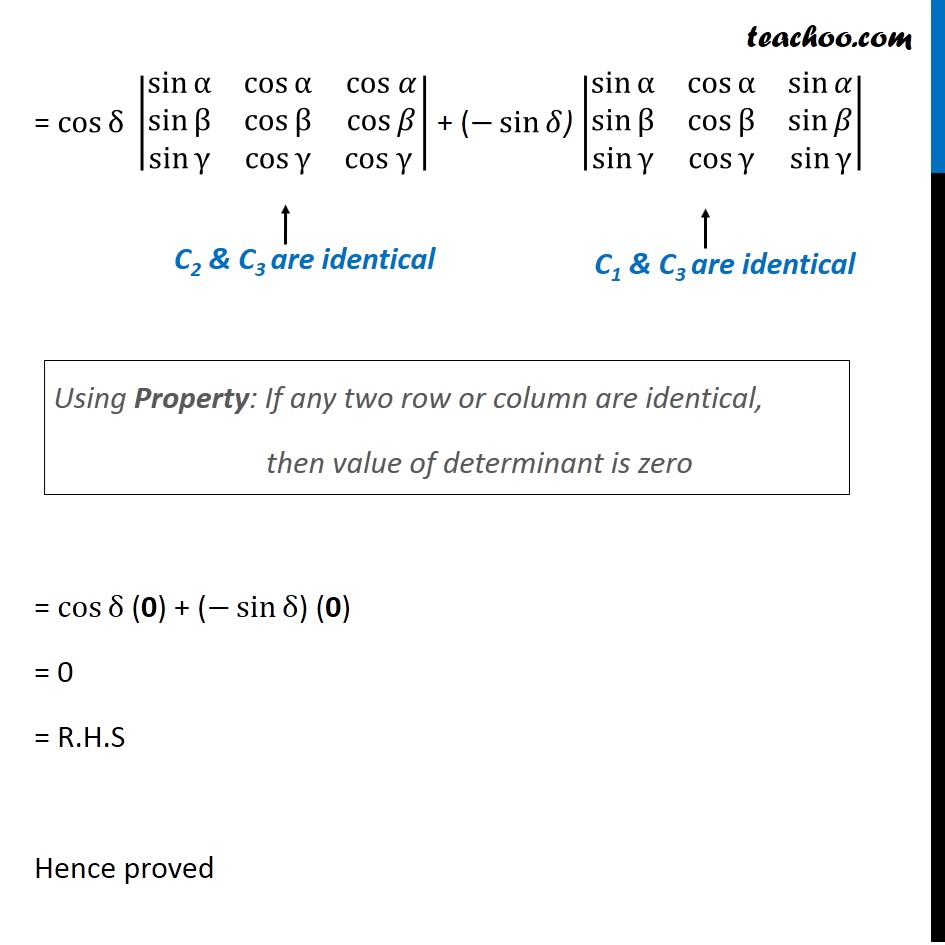


Chapter 4 Class 12 Determinants
Chapter 4 Class 12 Determinants
Last updated at December 16, 2024 by Teachoo



Transcript
Question 9 Using properties of determinants, prove that: |■8(sinα&cosα&cos〖(α+δ)〗@sinβ&cosβ&cos〖(β+δ)〗@sinγ&cosγ&cos〖(γ+δ)〗 )| = 0 Let ∆ = |■8(sinα&cosα&cos〖(α+δ)〗@sinβ&cosβ&cos〖(β+δ)〗@sinγ&cosγ&cos〖(γ+δ)〗 )| Using cos (x + y) = cos x cos y – sin x sin y = |■8(sinα&cosα&cos𝛼 cos〖δ −sin〖𝛼 sin𝛿 〗 〗@sinβ&cosβ&cos𝛽 cos〖𝛿−sin〖𝛽 sin𝛿 〗 〗@sinγ&cosγ&cosγcos 𝛿 −sin〖γ sin𝛿 〗 )| Expressing elements of 2nd row as sum of two elements = |■8(sinα&cosα&cos 𝛼 cos〖δ 〗@sinβ&cosβ&cos𝛽 cos𝛿@sinγ&cosγ&cos γ cos 𝛿 )| + |■8(sinα&cosα&−sin〖𝛼 sin𝛿 〗@sinβ&cosβ&−sin〖𝛽 sin𝛿 〗@sinγ&cosγ&−sin〖γ sin𝛿 〗 )| Using Property : If some or all elements of a row or column of a determinant are expressed as sum of two (or more) terms ,then the determinant is expressed as a sum of two (or more) determinants. Taking cos 𝛿 common from C3 = cos〖δ 〗 |■8(sinα&cosα&cos 𝛼@sinβ&cosβ&cos𝛽@sinγ&cosγ&cos γ )| + (−sin𝛿) |■8(sinα&cosα&sin𝛼@sinβ&cosβ&sin𝛽@sinγ&cosγ&sinγ )| = cos〖δ 〗(0) + (−sinδ) (0) = 0 = R.H.S Hence proved Using Property: If any two row or column are identical, then value of determinant is zero